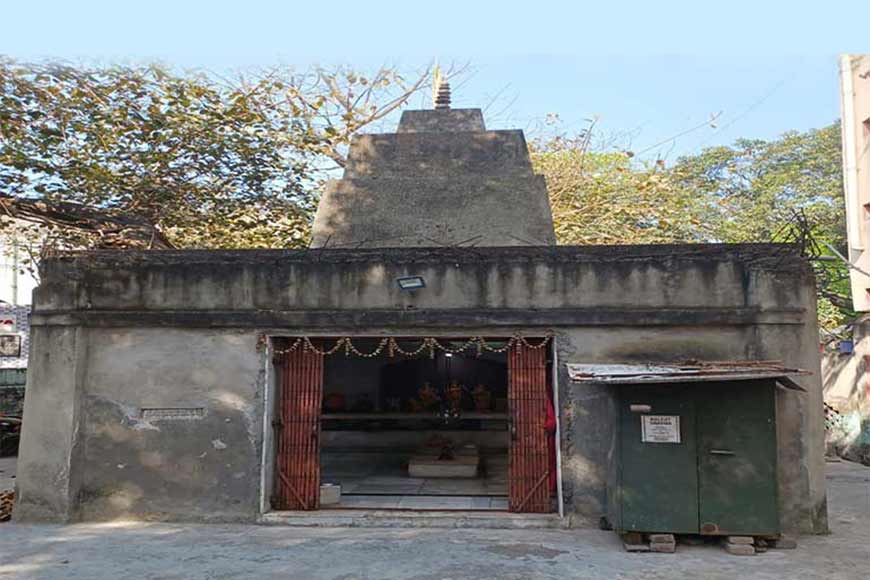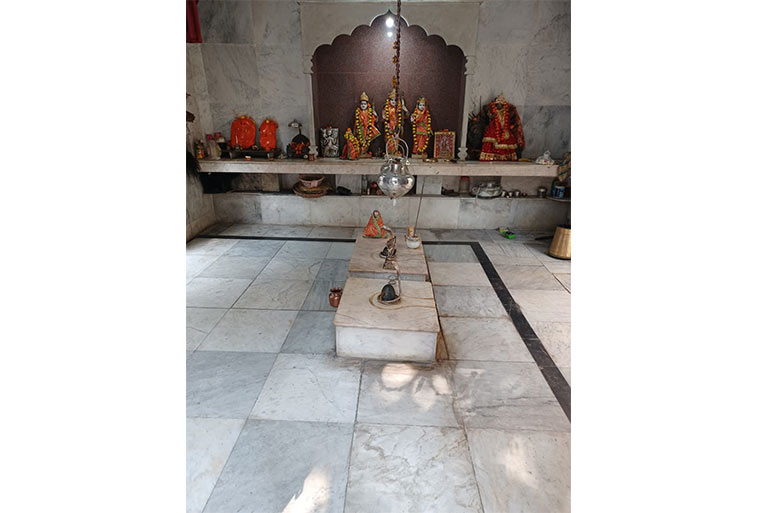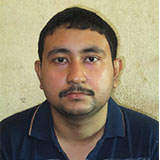What is hidden behind Maidan police station?

Kolkata still has many unearthed treasures and unheard tales. GB brings you one such tale in a 2-part series on an abandoned historical site just in the heart of the city that has the grave of one of the last prince of the Pala Dynasty. Read this fascinating story
Chowringhee is a busy neighbourhood of Central Kolkata. After the British started expanding their settlement outside the Fort area in the mid-18th century, the area around Chowringhee was one of the first area to be included to the new site. During the early British developments around Chowringhee, sprawling bungalows and houses were constructed all along the eastern end of the road. But amid all the developmental projects, a major historical site was abandoned. The grave of Chowranginath, a famous prince belonging to the Pala dynasty, who renounced his kingdom and became a Yogi. And that grave is located just behind Maidan Police Station, close to Exide crossing next to Nandan campus. The tomb remains at its original spot to this day, forsaken and obliterated from public memory.
The Pala dynasty ruled the regions of Bengal and Bihar for about 400 years, from the 8th century until the end of the 11th century. During the Pala reign, the region flourished and hence is known as the golden era of Bengal’s history. The Pala dynasty was instrumental in establishing prosperity and stability in Bengal. The basis for Bengali language was also laid during their reign. But how did Chowranginath land in Kolkata?

In the 17th century or prior to it, the area between Maidan and Esplanade was a tiger-infested dense forest. At the eastern end was an old road, which had once been built by the Sabarna Roy Choudhury family to connect Barisha with Halisahar. Beyond it were swamps and vast stretches of paddy fields dotted with huts where poor fishermen, wood cutters and weavers lived. This was of course well before Job Charnock had arrived in India. There were three small villages on the fringes of the forest, namely Cherangi, Birjee and Colimba.
Chowranginath was a revered hermit of the Nath yogi sect. He was a disciple of Yogi Matsyendranath. According to Dr Dinesh Chandra Sen, Gorakshanath established the Kalighat Temple sometime between 10th and 11th century and Chowranginath was assigned the job of ‘pujari’ at the temple. In fact, he is believed to be the first pujari of the Kalighat temple.
But prior to that, let us explore a few interesting facets of the ‘Chourasi Siddha’ (84 Siddhas) concept. Siddha means "one who is accomplished." It refers to perfected masters who have achieved a high degree of physical as well as spiritual perfection or enlightenment and are liberated souls. Eighty-four Sahajayani Mahasiddhas were the main leaders of the trend of Sahajayan in Bengal from the post-Gupta period to the Sen era. Although the Sahajayani movement reached its peak of glory through the works of Siddhacharya Naropa and Nigudakini during the reign of Mahipala, the trend continued till the first half of the Pala period. Chowranginath is a flag bearer of the Sahajayani sect. According to historical records, this son of King Devpal, was a victim of palace politics. His hands and legs were dismembered mercilessly and he was left for dead. He would have bled to death but for Sahajyani Yogi Achintya, who saw him and rushed to rescue him from the throes of certain death. With the help of another of his disciples, a shepherd, he tended the critically injured prince back to health. The yogi then consecrated him and initiated him to Sahajayani sect.
The shepherd came to be known as Gorakshanath, the keeper and savior of the cattle and the Pala prince was christened as Chowranginath, one whose four limbs have been severed. Chowranginath was a devout disciple who followed his Guru’s teachings to attain Siddhi powers through meditation, control of the senses, devotion, chanting of mantras and pranayama (controlled breathing techniques). He succeeded in his mission and according to folklore, his severed limbs were restored and he regained his previous physical form.
(to be continued)
Image : Raktim Mukhopadhyay










